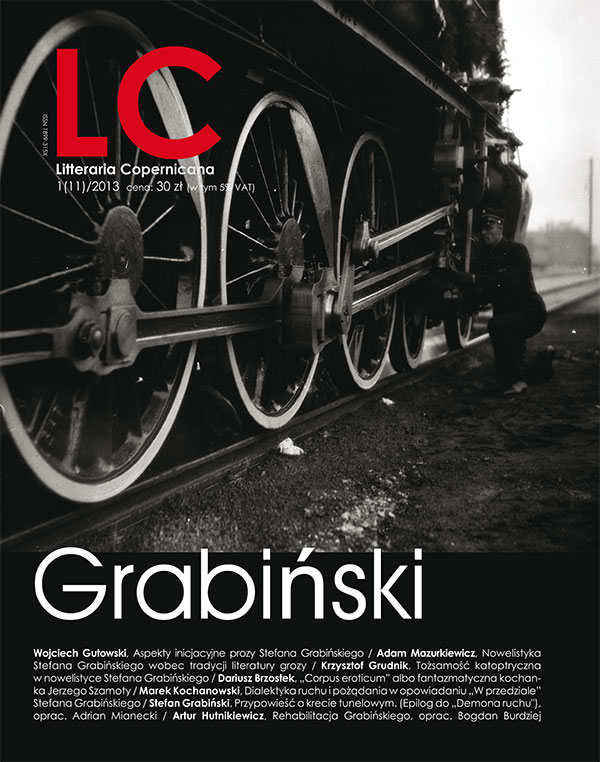Aspekty inicjacyjne prozy Stefana Grabińskiego
DOI:
https://doi.org/10.12775/LC.2013.001Abstrakt
Initiation Aspects of Stefan Grabiński’s Prose
Abstract
The article presents various initiation forms and themes in Stefan Grabiński’s prose. In his short stories they appear in fragments, in traces, and take on the shape of – so common in modern literature – anti-initiation, leading the main characters towards the discovery of the deepest sense of existence (which turns out to be beset by irrational, hostile forces) that finds fulfilment in death (in destructive transgression). The main themes, which in short stories play the role of media that direct the main characters towards a negative initiation (anti-initiation), are primarily motion (e.g. railway motion in Demon ruchu [The Motion Demon] from 1919) and fire (in Księga ognia [The Book of Fire] from 1922). The analysis of initiation plots developed in Grabiński’s stories presents two opposite visions of the world: “the closed one”, in which the development of the initiating plot points to the objective, final, “ultimate” metaphysical and moral order (Cień Bafometa [Shadow of Baphomet] from 1926; Klasztor i morze [Cloister and Sea] from 1928) and “the open one” that unveils either the polysemantic insolvability of inspiring experience (Salamandra [Salamander] from 1924) or the shaping of creative personality, “the new Sisyphus” fighting with fate (Wyspa Itongo [Itongo Island] from 1936).
Pobrania
Opublikowane
Jak cytować
Numer
Dział
Statystyki
Liczba wyświetleń i pobrań: 1008
Liczba cytowań: 0



